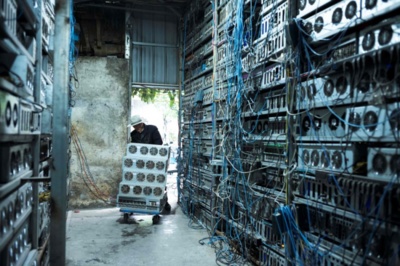In the ever-evolving landscape of cryptocurrency mining, evaluating the return on investment (ROI) for specific hardware like the Litecoin L9 miner has become a critical endeavor for enthusiasts and professionals alike. Litecoin, often hailed as the silver to Bitcoin’s gold, operates on a Scrypt algorithm, distinguishing it from the SHA-256 used by Bitcoin. This difference not only affects mining efficiency but also influences the overall profitability in a market where prices fluctuate wildly. As companies specializing in mining machines and their hosting services know all too well, understanding these nuances can mean the difference between lucrative returns and disappointing losses. Today, with Litecoin prices hovering around $50 to $70 per coin, the L9 miner’s performance warrants a closer look, especially when compared to giants like Bitcoin or emerging players such as Dogecoin.
The Litecoin L9 miner, manufactured by companies at the forefront of crypto hardware, boasts a hash rate of approximately 2.5 GH/s, making it a compact yet powerful option for those venturing into altcoin mining. At current prices, which see the L9 retailing for about $1,200 to $1,500, potential buyers must weigh initial costs against ongoing expenses like electricity and hosting fees. Imagine a world where your mining rig hums in the background, silently churning out Litecoins amid the digital frenzy of exchanges like Binance or Coinbase. This setup contrasts sharply with Bitcoin mining, where rigs demand immense power—often leading to higher operational costs. For instance, while a Bitcoin miner might consume 3,000 watts, the L9 sips at around 750 watts, offering a more energy-efficient path to profitability in an era of rising environmental concerns.

Calculating ROI for the L9 involves a multifaceted approach, incorporating factors such as hash rate, difficulty levels, and market volatility. A basic formula might look like this: ROI = (Total Revenue from Mined Coins – Total Costs) / Total Costs. For the L9, if you’re mining at peak efficiency, you could expect to generate around 0.1 to 0.2 Litecoins per day, depending on network difficulty. At $60 per Litecoin, that’s roughly $6 to $12 in daily revenue before expenses. However, subtract electricity costs—say $0.10 per kWh—and hosting fees from services that manage mining farms, and the net daily profit might dwindle to $2 to $5. This unpredictability mirrors the broader crypto ecosystem, where Ethereum’s shift to proof-of-stake has left miners scrambling, and Dogecoin’s meme-fueled surges create fleeting opportunities. Exchanges play a pivotal role here, as timely sales can amplify returns, but they also introduce risks like transaction fees and market dips.
One cannot overlook the advantages of mining machine hosting, a service that aligns perfectly with our company’s expertise. By outsourcing to a professional mining farm, users avoid the hassles of home setups, including noise, heat, and potential hardware failures. These farms, equipped with state-of-the-art mining rigs, optimize for cooling and power efficiency, potentially boosting the L9’s ROI by 20-30%. Picture rows of miners in a vast, climate-controlled facility, each contributing to a collective hash power that rivals decentralized networks. This model not only enhances profitability for Litecoin but also extends to other currencies; for example, hosting a rig for Ethereum could yield passive income through staking rewards, though it’s a different beast altogether. The burst of activity in the crypto space, from Bitcoin’s halving events to Dogecoin’s viral trends, underscores the need for adaptable strategies.
Comparatively, investing in a Litecoin L9 miner stacks up against alternatives like Bitcoin ASICs or even multi-coin rigs. Bitcoin mining, with its higher barriers to entry, often requires substantial upfront investment—think $10,000 for a top-tier machine—yet promises greater rewards during bull runs. Ethereum, on the other hand, has evolved with its move to Ethereum 2.0, reducing the appeal of traditional mining. In this mosaic, the L9 emerges as a versatile choice for those eyeing diversification, perhaps combining it with Dogecoin mining for a portfolio that weathers market storms. But beware the pitfalls: a sudden spike in Litecoin’s network difficulty could erode profits overnight, much like how Ethereum’s updates have disrupted the mining community.

As we gaze into the future, the ROI for Litecoin L9 miners at current prices appears cautiously optimistic. With global adoption of cryptocurrencies on the rise—fueled by institutional investments and regulatory developments—the demand for efficient mining solutions will only grow. However, factors like increasing energy costs and potential regulatory crackdowns on mining farms could temper enthusiasm. For companies in the business of selling and hosting these machines, educating customers on balanced portfolios—including dabbling in Bitcoin for stability or Ethereum for innovation—remains key. Ultimately, the L9’s success hinges on a blend of technical prowess and market timing, turning what might seem like a gamble into a calculated venture in the thrilling world of digital currencies.
Litecoin L9 mining ROI? Squeezing profits feels like searching for crypto gold dust in a digital desert. Volatility alert! Proceed with extreme caution.